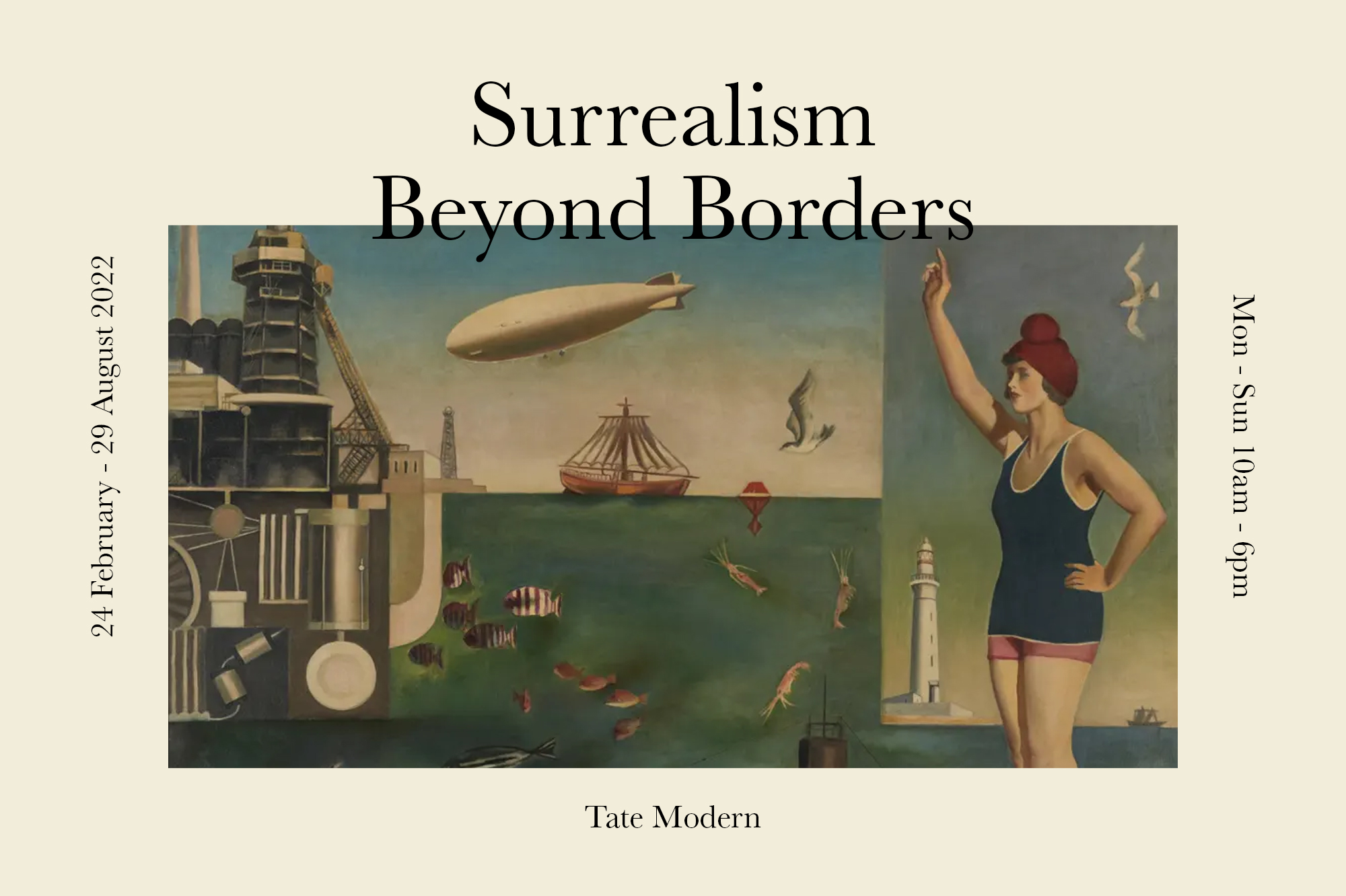
Surrealism Beyond Borders
This landmark exhibition will rewrite the historyhistory of the revolutionaryrevolutionary art movement
Surrealism is not a style - but a state of mind. It aims to subvert reality. To find the uncanny in the everyday. To tap into our unconscious desires and bring dreams to life. And for many artists around the world, it has been a way to challenge authority and imagine a new world.
Surrealism Beyond Borders
24 February - 29 August 2022
telephone receiver that morphs into a lobster. A miniature train that rushes from a fireplace.
These are just a few familiar images associated with Surrealism; a revolutionary idea sparked in Paris around 1924 that asserted the unconscious and dreams over the ordinary and everyday. While Surrealism could often generate poetic and even humorous works, it was also taken up as a much more severe weapon in the struggle for political, social, and personal freedom by many more artists worldwide.
Nearly from its inception, Surrealism has had an international scope, but knowledge of the movement has been formed primarily through a Western European focus. This exhibition reconsiders the actual “movement” of Surrealism across boundaries of geography and chronology—and within networks that span Eastern Europe to the Caribbean, Asia to North Africa, and Australia to Latin America. Including almost eight decades of work produced across 45 countries, Surrealism Beyond Borders offers a fresh appraisal of these collective concerns and exchanges—as well as historical, national, and local distinctions—that will recast appreciation of this most revolutionary and globe-spanning movement.
sources photos 1-4
Discover newnew things about this key artart movementmovement
Surrealism is a movement. Through their art, Surrealists wanted to channel the unconscious as a means to unlock the power of the imagination. Its powerful art continues to offer a new direction for exploration – from its beginnings in Paris in 1924 to today.
It was a transnational movement
Through the work of many interested individuals and groups, Surrealism found homes in many places. It went beyond national boundaries in its scope and impact and is seen in our Surrealism Beyond Borders exhibition as a transnational movement. Major artists from around the world were inspired and united by Surrealism – from Buenos Aires, Cairo, Lisbon, Mexico City, Prague, Seoul, and Tokyo. Different uses for Surrealism also took root at different points in history, from the 1920s to the 1970s. From Surrealists from Belgrade working in the 1920s, Shanghai in the 1930s, Santiago de Chile in the 1940s and Chicago in the 1970s.
Surrealism was a community
What made Surrealism a ‘movement’ was the sense of a supportive community between like-minded artists and writers. They were united by certain shared ideals – making collective artworks, publishing manifestos and journals – their creative friendships, as well as their political and moral beliefs. Manifestos, in particular, were used to make public statements and often signed by those from many different locations. For example, an anti-colonial text of 1932 included contributors from Paris and Martinique, while the Arab Surrealist Manifesto was published by Chicago Surrealists in 1975.
Surrealism stood for freedom
The Surrealism movement was sparked from a revolutionary idea in Paris around 1924. And while it has generated many familiar works – from Salvador Dalí’s Lobster Telephone to René Magritte’s Time Transfixed – it has also been used by artists around the world as a serious weapon in the struggle for political, social, and personal freedom.And from student, civil rights and anti-war protests to the decolonisation movement, Surrealism has served as this valuable tool. The movement found a place in political protests against Colonialism, Racism, Stalinism and Nazism, and the Vietnam War, for example. Léopold Senghor, poet, first president of Senegal and cofounder of the Black consciousness movement Négritude explained in 1960:
We accepted Surrealism as a means, but not as an end, as an ally, and not as a master.
For the full version article, please visitwww.tate.org.uk

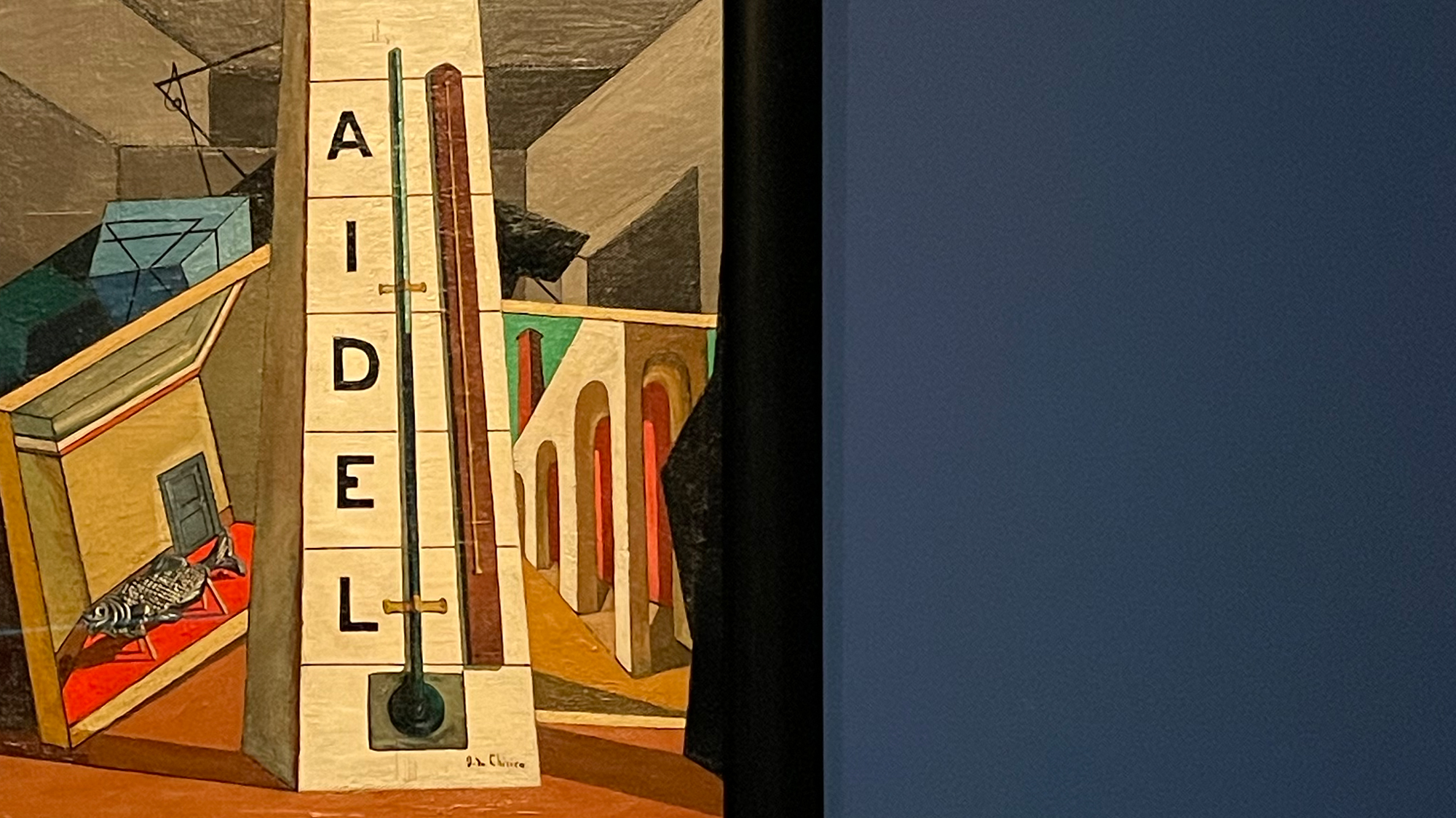
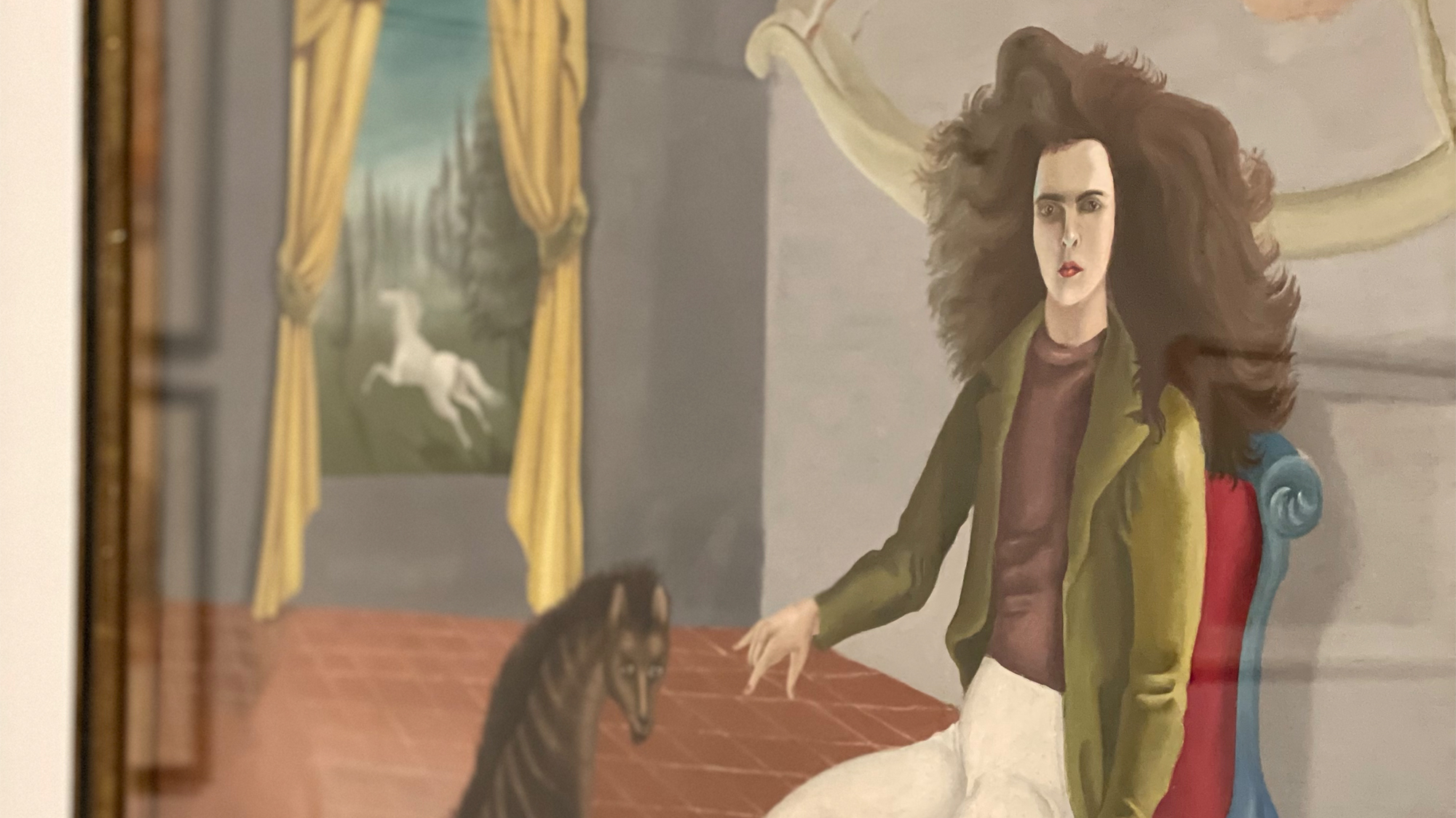



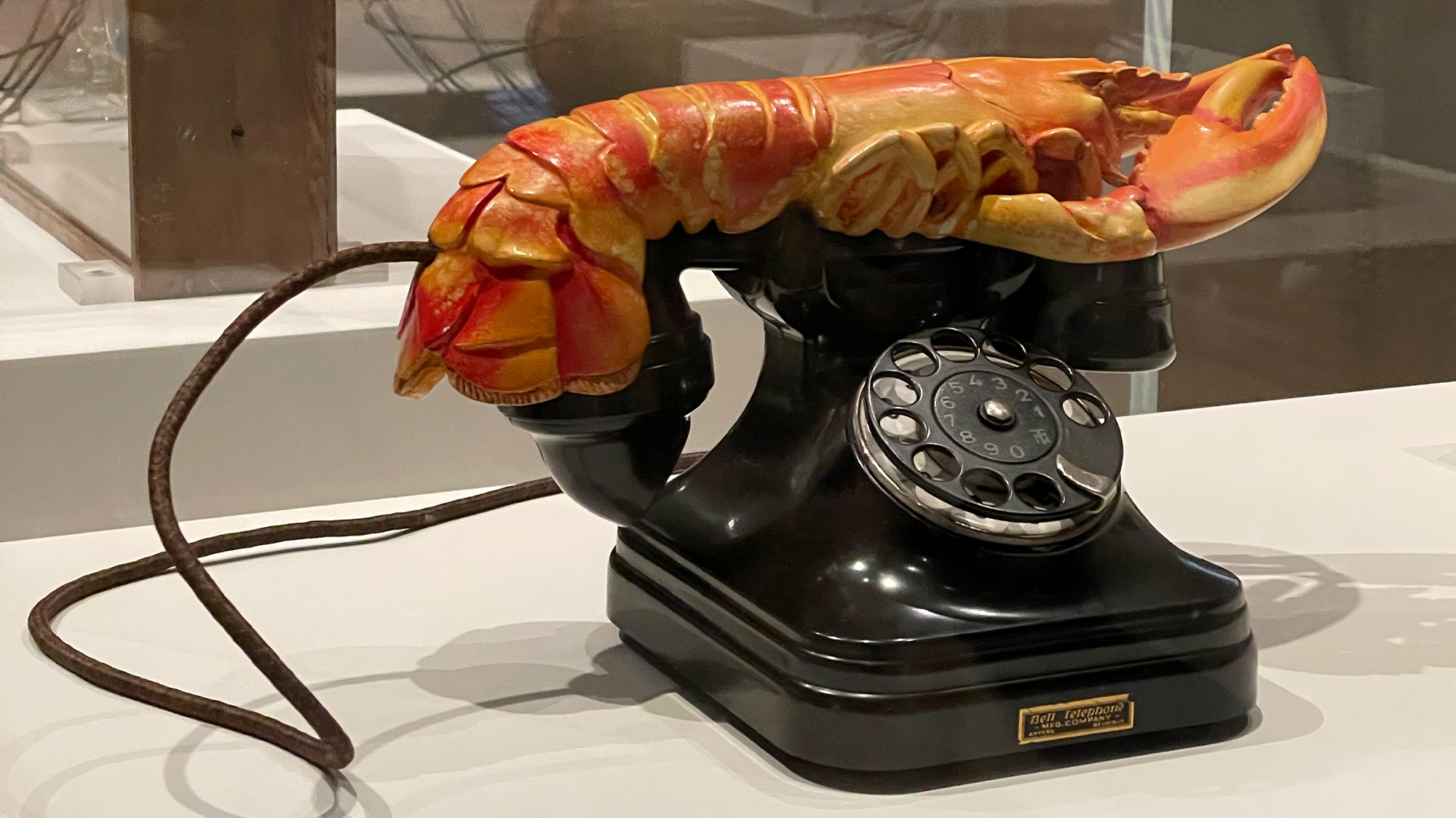

Surrealism Beyond Borders
24 February - 29 August 2022
Tate Modern
Bankside, London SE1 9TG
Mon - Sun 10am - 6pm
Ticket: £18 / Free with ticket for Tate Members
For more information, please visit
www.tate.org.uk
More articles about surrealism:
↳
Surrealism, but Not as You Know It
↳
TATE ETC.
ISSUE 54
↳
Surrealism Beyond Borders visiting guide
Sources & Credit:
© Tate Modern, London
www.tate.org.uk
1. https://www.tate.org.uk/whats-on/tate-modern/surrealism-beyond-borders
2. https://www.metmuseum.org/exhibitions/listings/2021/surrealism-beyond-borders
Photos:
1. Abdul Kader El Janabi, Visa sans planète (Visa without a Planet) 1983–90. Pencil, ink, and collage, contributions by Robert Benayoun, Jayne Cortez, Melvin Edwards, Anne Ethuin, Martin Guderna, Edouard Jaguer and Tony Pusey on passport
2. Ramses Younan Untitled 1939 Sheikh Hassan M. A. Al-Thani © Estate of Ramses Younan
3. Wilhelm Freddie, Min kone ser pa, benzinmotoren hunden ser paa mig (My Wife Looks at the Petrol Engine, the Dog Looks at Me) 1940, Oil paint on Masonite
4. Helen Lundeberg Plant and Animal Analogies 1933-34 The Buck Collection at the UCI Institute and Museum for California Art (California, US)
2. Ramses Younan Untitled 1939 Sheikh Hassan M. A. AI-Thani © Estate of Ramses Younan
3. Toshiko Okanoue The Call 1953 Wilson Centre for Photography © Toshiko Okanoue, Courtesy of The Thied Gallery Aya
4. Kaveh Golestan Untitled, from Az Div o Dad series © Kaven Golestan Estate, Courtesy Archaeology of the Final Decade
Video:
1. https://youtu.be/gil4e0lvFKA
2. https://youtu.be/G-gyzGqsWio


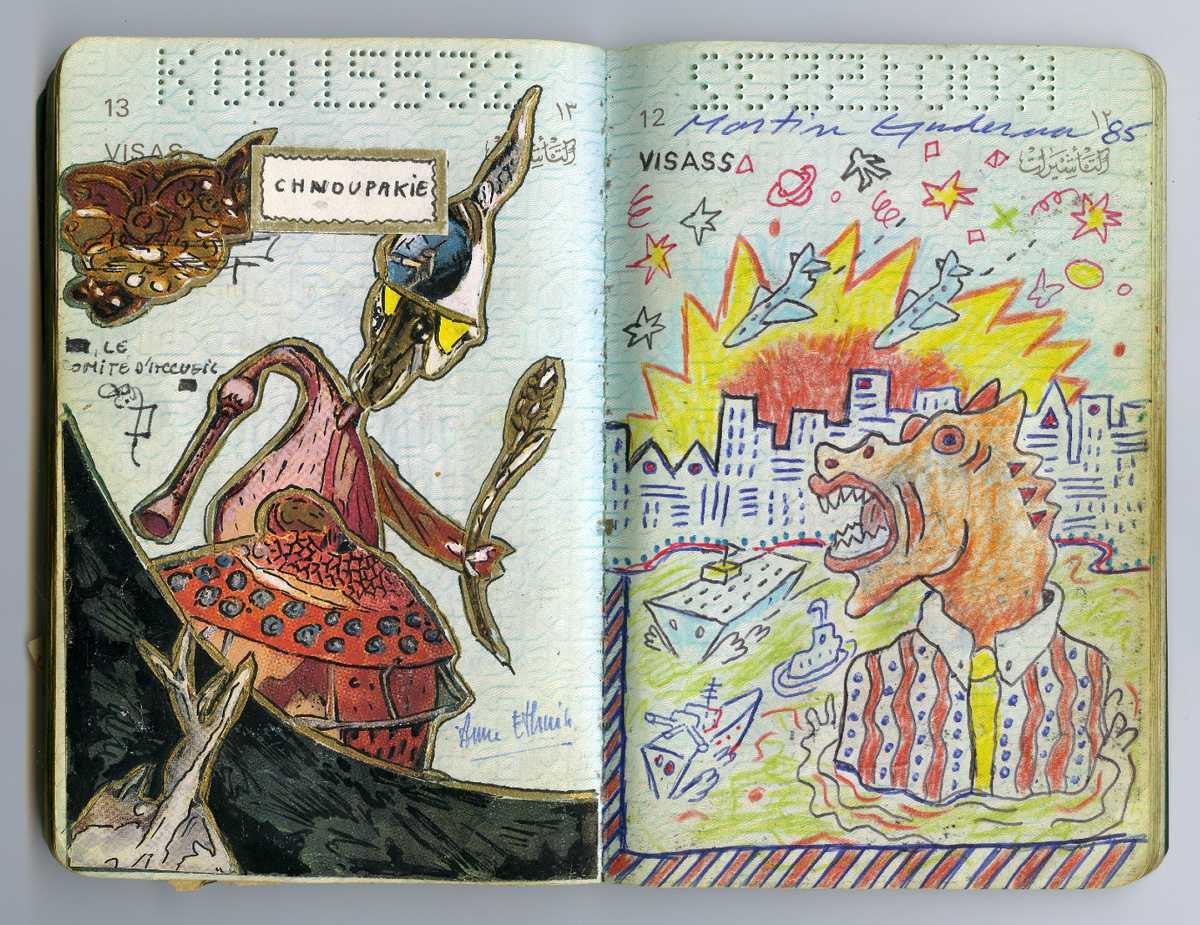
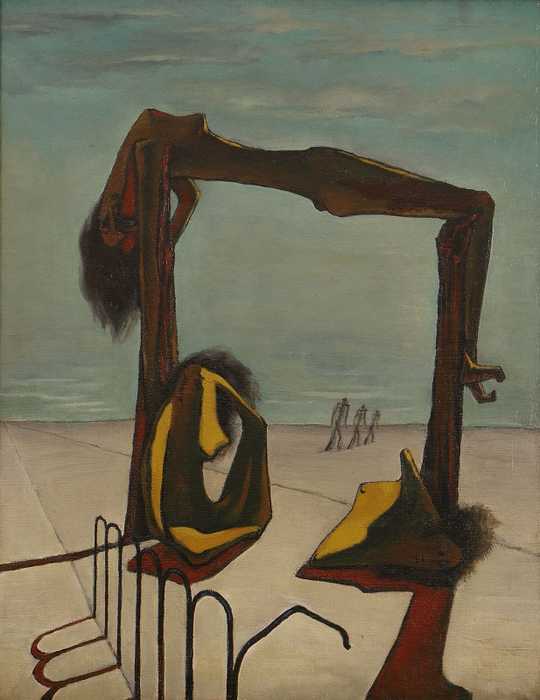
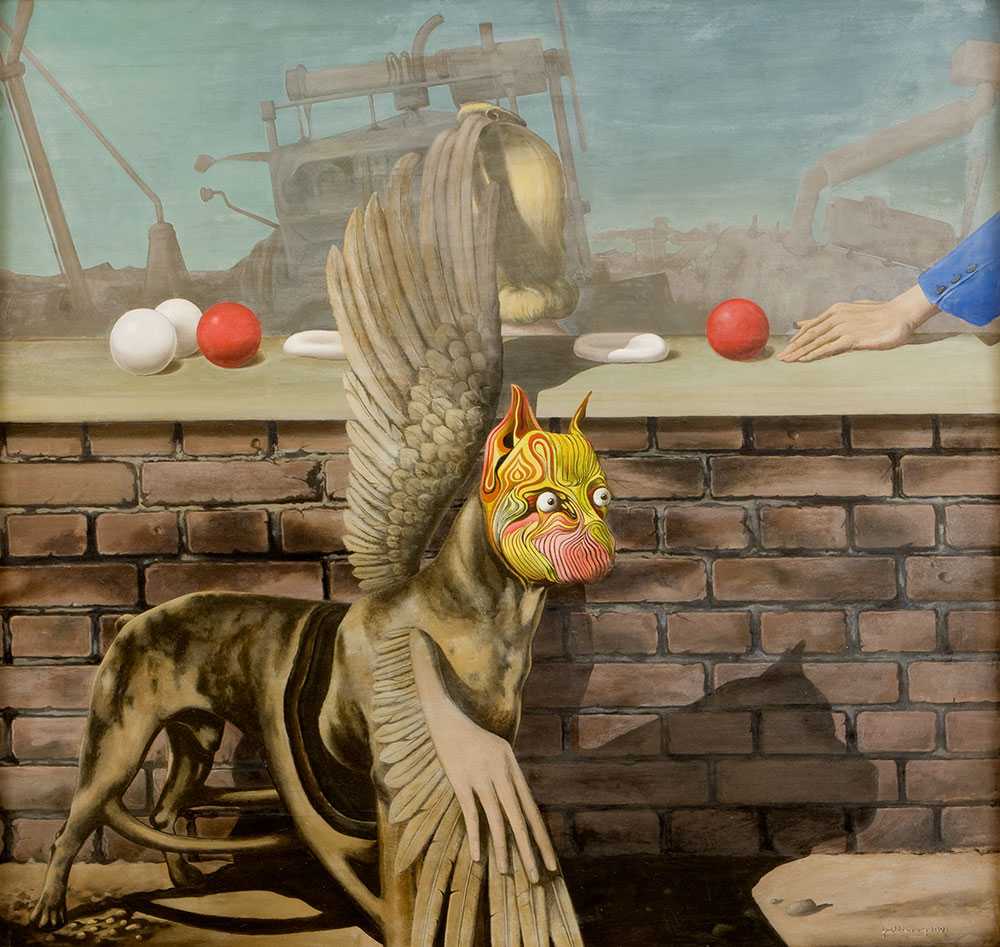
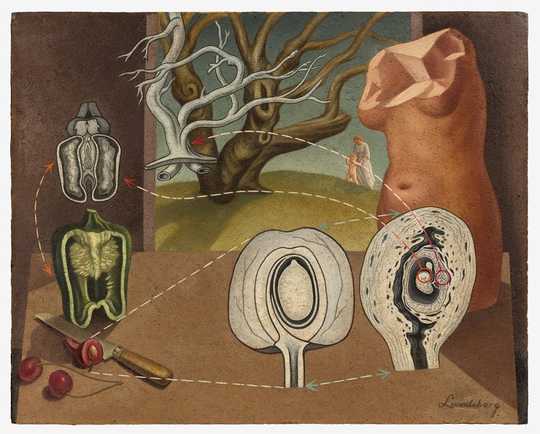
Leave a Reply
You must be logged in to post a comment.